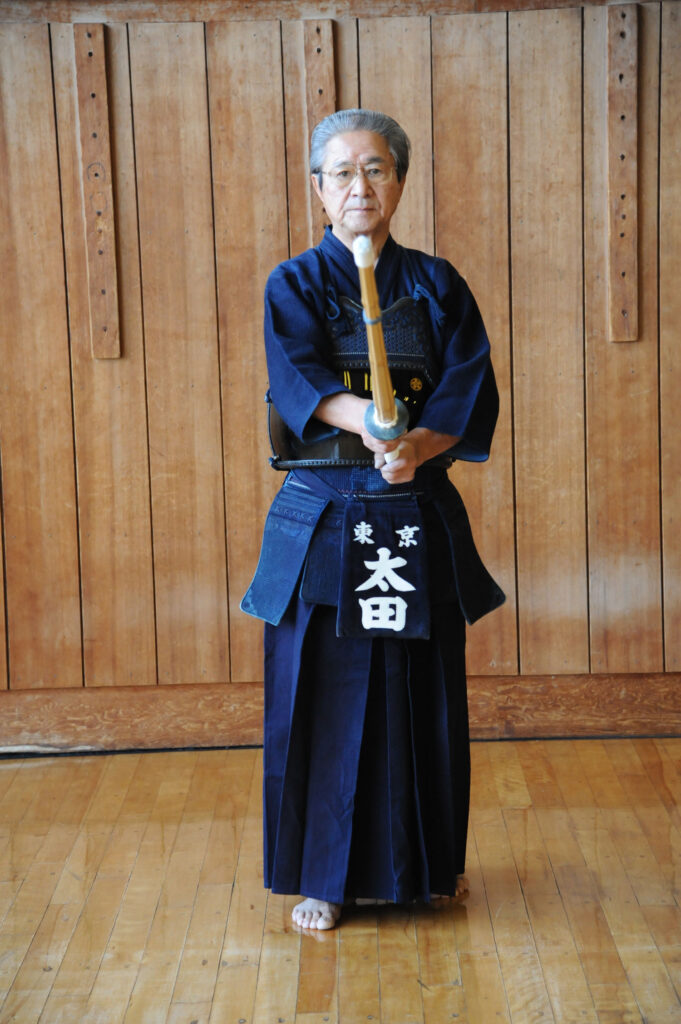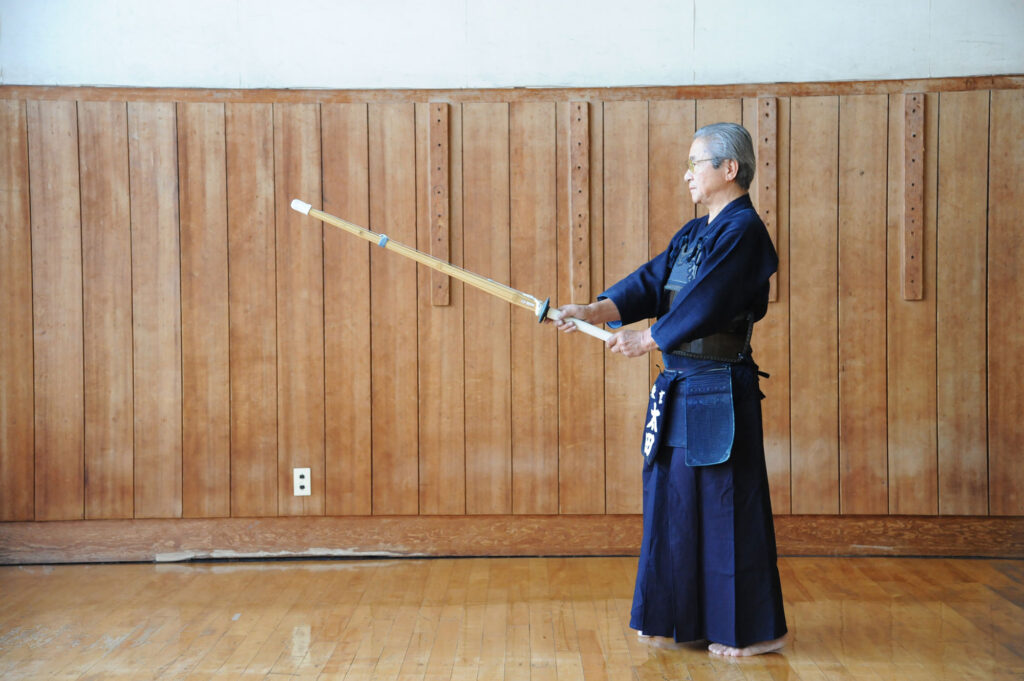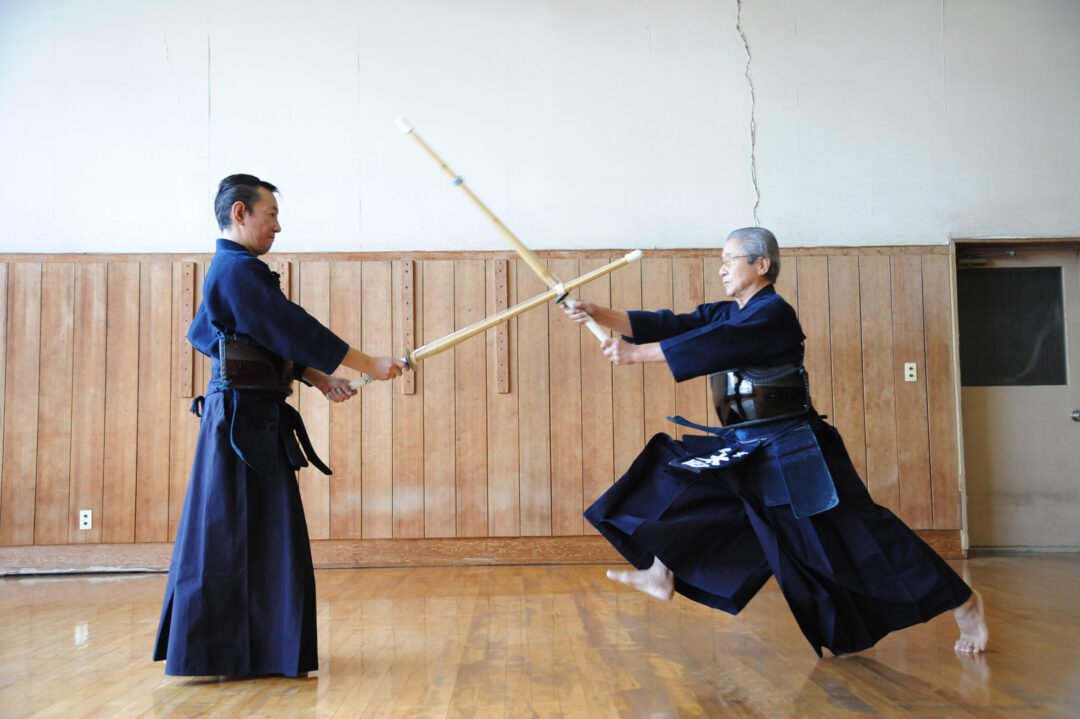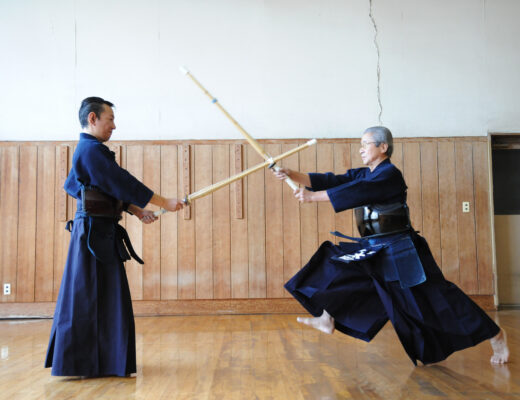If the distance to the opponent is far, it is far for both. However, with Irimi techniques, we can achieve a distance that will be far for your opponent, yet close to you. Ota Tadanori, whose footwork is sharp and light, tells us the secrets of this art.
Ota Tadanori, 8th Dan Hanshi
Born in Chiba Prefecture in 1941. He received sword training from Fukuoka Akira Sensei, a graduate of Shudo Gakuin, and advanced to the Metropolitan Police Department after graduating from Sosa High School. He made numerous achievements as a competitor and instructor, served as Chief Instructor of Kendo at the Metropolitan Police Department, and retired in 2000. He is currently the Executive Director of the All Japan Kendo Dojo Federation and a lecturer at Nippon Budo Gakuen.
A relaxed Kamae as foundation for Irimi
In order to practice the art of Irimi, your basic Kamae must be solid. If your Kamae is unstable, it will hinder your footwork and body movement. Above all, it will give your opponent the opportunity to apply Seme to you.
The key to Kamae is “Jyokyo Kajitsu” (Relaxed above, solid below). Keep your shoulders relaxed and your waist area tight. Keep your body in a natural state. If this seems complicated to you, it may help to imagine how you would normally walk. No one walks with tight shoulders, so you should hold the Shinai with a relaxed upper body and the same feeling.
In order to practice a Kamae according to “Jyokyo Kajitsu” (roughly: relaxed upper body, solid lower body), vocalization is important as well. If the voice comes through the throat, the upper part of the body will be strained. If the voice comes from the abdomen, the lower part of the abdomen will have more strength and the upper part of the body will be more relaxed.
If there is stiffness in any part of the body, your Kamae will not be relaxed. During mutual Seme with your opponent, you should not stare at a single point, but look at your opponent with Enzan no Metsuke (as if gazing upon a far away mountain), so that your mind is free and your Kamae is free from stiffness. You will be able to react quickly to any of your opponent’s movements if you are prepared with a released mind and without hasted thoughts of striking fast or hard.


Foundational strength through Kirikaeshi and Kakarigeiko
The rest of this article is only available for Kendo Jidai International subscribers!



